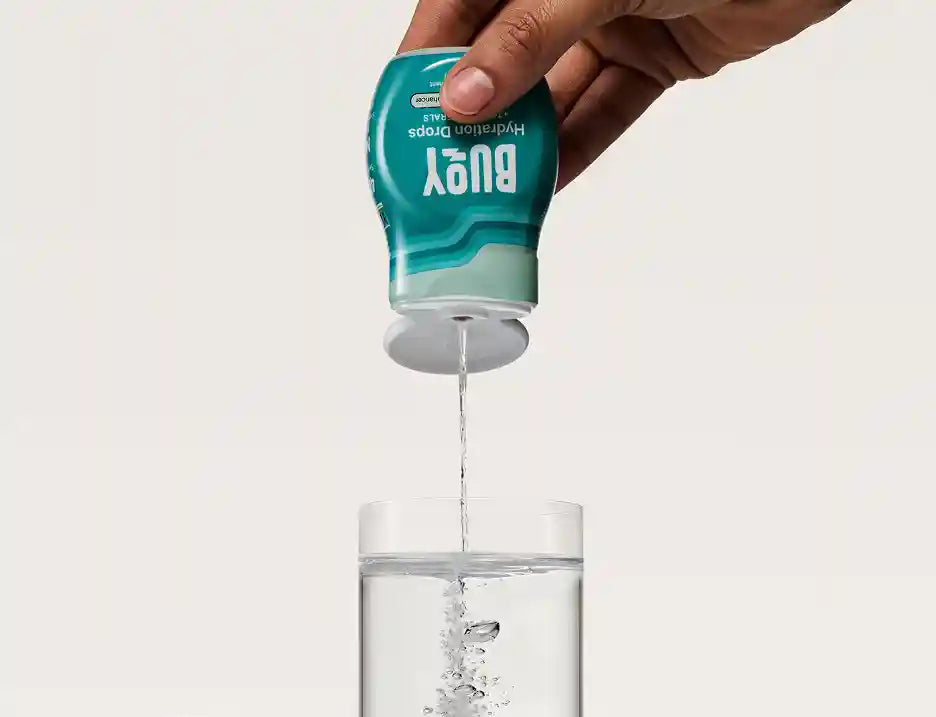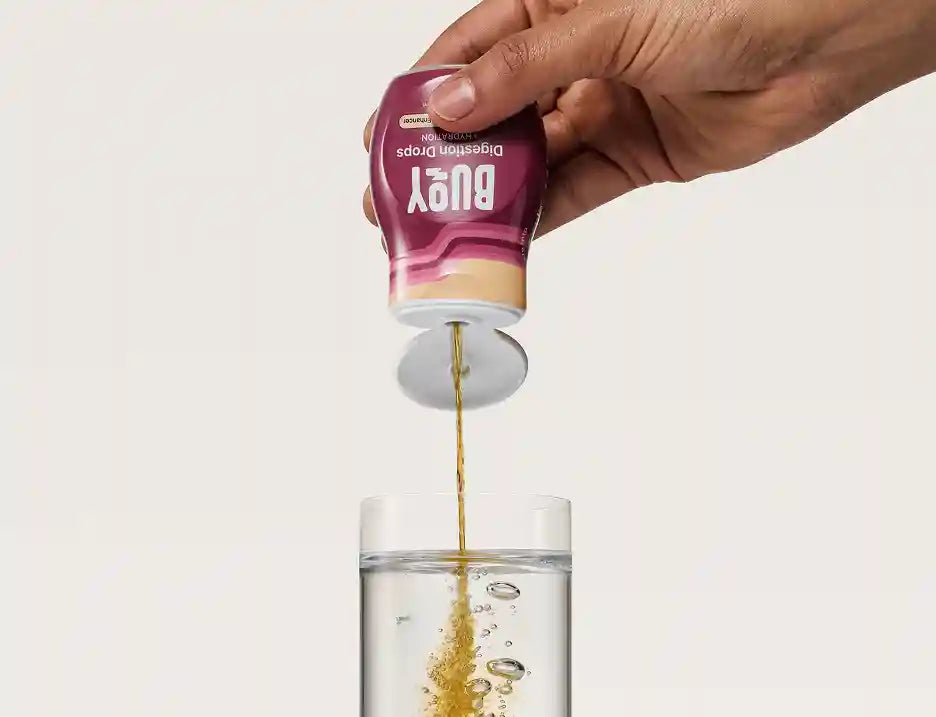
Understanding Environmental Triggers for POTS: Managing Your Surroundings
Dealing with Postural Orthostatic Tachycardia Syndrome (POTS) can be difficult, especially when your environment plays a part in triggering your symptoms. That’s why it’s important to learn how to identify and manage these environmental triggers to reverse symptoms and improve your quality of life.
Essential Takeaways:
- Awareness is Empowering: Understanding your personal environmental triggers for POTS can greatly improve your ability to manage your symptoms. By identifying specific factors that affect you, such as temperature changes or indoor air quality, you can take proactive steps to minimize their impact on your health.
- Learn How to Adapt: Living with POTS often requires flexibility in your approach to daily activities. Learn to adapt your plans based on environmental conditions, whether it’s choosing indoor activities on hot days or planning rest periods during outdoor events. This adaptability can help you maintain a more active and fulfilling lifestyle while managing your POTS symptoms effectively.
Let’s take a look at environmental factors that may be causing or worsening your POTS symptoms and discuss practical strategies to help you manage them effectively.
- What Are Environmental Triggers for POTS?
- How Weather Changes Affect POTS Symptoms
- Indoor Environmental Factors to Consider
- Managing Outdoor Activities with POTS
- How to Identify Your Personal Triggers
- Practical Tips for Managing Environmental Triggers
- The Role of Lifestyle Adjustments in POTS Management
- Take Control of Your Environment to Manage POTS Symptoms Better
What Are Environmental Triggers for POTS?
Environmental triggers for POTS are external factors in your surroundings that can cause or worsen your symptoms. These triggers can vary from person to person, but common ones include:
- Temperature Changes: Sudden shifts from hot to cold or vice versa can affect blood flow and trigger POTS symptoms.
- Humidity: High humidity can make it harder for your body to regulate temperature, possibly worsening POTS symptoms.
- Altitude: Changes in altitude can affect blood oxygen levels and trigger symptoms.
- Allergens: For some POTS patients, allergens can trigger an immune response that exacerbates symptoms.
- Barometric Pressure: Changes in air pressure, often associated with weather shifts, can impact some POTS patients (1,2,3).
Understanding these environmental factors affecting POTS is the first step in managing them. By recognizing what affects you the most, you can take steps to minimize their impact and create a more POTS-friendly environment.
How Weather Changes Affect POTS Symptoms
Weather can have a significant impact on POTS symptoms. Understanding the relationship between POTS and weather changes can help you better prepare for and manage your condition. Here’s how different weather conditions might affect you:
- Hot Weather: High temperatures can cause vessels to dilate, lowering blood pressure and making it harder for your body to circulate blood. This can lead to dizziness, fatigue, and fainting.
- Cold Weather: Cold can cause blood vessels to constrict, which may increase blood pressure. For some, this can worsen symptoms.
- Humid Weather: High humidity can make it harder for your body to cool down, increasing your heart rate and causing dehydration (1,4).
Understanding how weather affects your POTS symptoms can help you better prepare and manage your condition. Now, let’s look at tips that can help you enjoy the outdoors even during extreme weather.
Tips for Managing Weather-Related Symptoms
Navigating the challenges of weather-related symptoms can be tricky for people with POTS. By taking steps to prepare yourself, you can more easily manage your symptoms and stay comfortable regardless of weather conditions. Start with these tips:
- Stay hydrated by drinking plenty of water with a squeeze of Buoy’s electrolyte and mineral drops.
- Wear weather-appropriate clothing, such as lightweight, breathable fabrics in the summer and warm, layered clothing in the winter.
- Use fans, air conditioning, or heating to maintain a comfortable indoor environment.
- Avoid prolonged exposure to extreme temperatures.
By incorporating these tips into your daily routine, you can better manage the impact of weather on your POTS symptoms. Remember, small adjustments can make a big difference in maintaining your comfort and well-being throughout the year.
Indoor Environmental Factors to Consider
Your home environment can also affect your POTS symptoms. Making a few adjustments can create a more comfortable and supportive living space. Here are some things to consider.
Air Quality
Poor indoor air quality can exacerbate POTS symptoms for some patients. To improve air quality in your home, use air purifiers, keep your space clean, and consider adding some air purifying plants to your home.
Lighting
Bright or flickering lights can trigger symptoms in some POTS patients. Use natural light when possible, install dimmer switches, and consider using warm-toned light bulbs.
Noise
For some, excessive noise can increase stress, potentially triggering POTS symptoms. To combat this, create quiet zones in your home, use noise-canceling headphones when needed, and try a white noise machine for better sleep.
Temperature
Maintain a consistent, comfortable temperature in your home. Use programmable thermostats and consider zoned heating and cooling systems if possible (1,4,5).
Your home is your sanctuary, and managing your POTS environment is crucial for controlling your symptoms. Paying attention to things like air quality, lighting, noise, and temperature are simple, yet effective ways to transform your home into a place that supports your health and well-being.

Using air purifiers can improve indoor air quality, which is important for managing POTS symptoms.
Managing Outdoor Activities with POTS
Outdoor activities are a wonderful way to enjoy nature and stay active, but for those with POTS, they can present unique challenges. With thoughtful planning and a few strategic adjustments, you can still participate in outdoor fun while managing your POTS triggers.
Here are some tips to help you make the most of your time outside while keeping your health in check.
Time Your Activities
Try to avoid being outside during the hottest parts of the day. Plan your outdoor activities for early morning or late evening when temperatures are cooler. This can help prevent overheating and minimize the risk of triggering symptoms.
Stay Hydrated
Hydration is important for managing POTS, especially when you’re active outdoors. Always carry water, and consider using Buoy electrolyte solutions to maintain your electrolyte balance at home or on the go.
Dress Appropriately
Wear loose, breathable clothing to stay cool and comfortable. Don’t forget sun protection, such as hats, sunglasses, and sunscreen, to shield yourself from the sun’s rays.
Plan for Rest
Find shaded areas or indoor locations where you can take breaks when you need to. Resting in a cool, shaded spot can help you recover and prevent symptoms from worsening.
Listen to Your Body
It’s important to pay attention to your body’s signals. Learn to recognize early signs that you need to rest or cool down, and don’t hesitate to take a break when you need it. Remember that taking breaks is a sign of strength, not weakness.
Acclimate Gradually
If you’re planning activities at different altitudes, allow time for your body to adjust. Gradual acclimation can help minimize the impact of altitude changes on your POTS symptoms.
When you plan outdoor activities with these strategies in mind, you can enjoy being outside while still effectively managing your POTS symptoms. With a little preparation, you can make the most of your time outdoors and maintain your health and well-being.
Remember to always listen to your body and make adjustments as needed to stay comfortable and safe.
How to Identify Your Personal Triggers
Identifying your personal POTS triggers is necessary to manage your symptoms effectively. Here are some methods you can use:
- Symptom Journal: Keep a daily log of your symptoms, activities, and environmental factors. Over time, you may notice patterns.
- Weather Apps: Use apps that track barometric pressure and other weather conditions along with your symptom tracking.
- Smart Home Devices: Some smart home systems can track indoor air quality, temperature, and humidity, which you can then compare with your symptoms.
- POTS Tracking Apps: There are several apps designed specifically for tracking POTS symptoms and potential triggers. Find out which apps we recommend for managing POTS in our guide: Resource Lists for POTS Patients: Your Go-To Guide.
- Wearable Devices: Some smartwatches and fitness trackers can monitor heart rate and other metrics that might help you identify POTS triggers.
Remember, identifying triggers is a process, and it may take time to recognize clear patterns. Be patient with yourself and stay consistent in your tracking efforts. Your dedication to understanding your body is a powerful step toward better managing your POTS.

Keeping a symptom journal and using smart devices can help you identify and manage your POTS triggers.
Practical Tips for Managing Environmental Triggers
Once you’ve identified your POTS triggers, here are some practical ways to manage them:
Clothing Choices
Wear layers to adjust to temperature changes easily. Invest in moisture-wicking, breathable fabrics for hot weather, and consider compression garments, which can help with blood flow.
Home Modifications
Install blackout curtains to control light and temperature. This can also contribute to better sleep quality. Use air purifiers and humidifiers/dehumidifiers as needed.
Lifestyle Adjustments
Gradually expose yourself to different environments to build a tolerance to your surroundings. Plan activities around your best times of day. Always be prepared with a “POTS kit” containing water, unrefined sea salt, and any necessary medications (4,5).
These practical tips can help you effectively manage your POTS triggers and create a more supportive environment for your health. Remember, managing POTS is a journey, and it's okay to take it one step at a time. Learn how to deal with the physical and emotional challenges with our guide to Coping Strategies for POTS Patients.
The Role of Lifestyle Adjustments in POTS Management
While managing environmental triggers is important, it’s just one piece of the POTS puzzle. Lifestyle adjustments also play a big role in managing POTS symptoms and improving your quality of life. Other lifestyle factors include:
- Diet: A balanced diet rich in fluids and salt can help you manage POTS symptoms. Some patients find that small, frequent meals help maintain steady blood sugar levels and reduce fatigue.
- Hydration: Staying well-hydrated is crucial for POTS patients. Consider using electrolyte solutions like Buoy to maintain optimal hydration and electrolyte balance.
- Exercise: While challenging, a structured exercise program can improve POTS symptoms over time. Start with recumbent exercises (exercises you can do lying down such as swimming, cycling on a recumbent bike, or rowing), and gradually increase intensity under medical supervision.
- Stress Management: Stress can worsen POTS symptoms. Incorporate stress-reduction techniques like meditation, deep breathing, or yoga into your daily routine.
- Sleep: Prioritize good sleep hygiene. Consistent, quality sleep can help you manage POTS by giving you the energy you need to go about your day (1,4.5).
Changing your lifestyle can make living with this condition a lot easier. A balanced diet, proper hydration, regular exercise, managing stress, and good sleep hygiene are all essential components of a comprehensive POTS management plan.
Get some more ideas for your daily routine in our guide, Lifestyle Changes to Manage POTS.
Take Control of Your Environment to Manage POTS Symptoms Better
Understanding and managing your environmental triggers for POTS can have a big impact on your quality of life. Remember that managing POTS often requires a combination of environmental awareness and lifestyle adjustments.
Everyone’s experience with POTS is different, so what works for one person may not work for you. Be patient with yourself as you learn to find your personal triggers.
Explore More POTS Resources
Want to learn more about managing POTS? Explore our extension collection of POTS guides. And don’t forget to check out Buoy’s electrolyte products for simple and effective ways to maintain electrolyte balance and stay hydrated, wherever your day takes you.
We’re Here to Help
Living with POTS is a journey, and it isn’t always easy. That’s why Buoy is here to help with how-to guides and high-quality electrolyte products that make managing POTS easier, so you can get back to doing what you love.

Add Buoy’s Hydration Drops to your daily routine to maintain optimal hydration and electrolyte balance for managing your POTS symptoms.
References:
- Cleveland Clinic. (2022). Postural Orthostatic Tachycardia Syndrome (POTS). Retrieved from https://my.clevelandclinic.org/health/diseases/16560-postural-orthostatic-tachycardia-syndrome-pots
- Hainsworth, R., Drinkhill, M. J. & Rivera-Chira, M. (2007). The Autonomic Nervous System at High Altitude. Clinical Autonomic Research: Official Journal of the Clinical Autonomic Research Society, 17(1), 13–19. Retrieved from https://doi.org/10.1007/s10286-006-0395-7
- Dysautonomia International. (2015). A Tale of Two Syndromes – POTS and MCAS. Retrieved from https://dysautonomiainternational.org/blog/wordpress/a-tale-of-two-syndromes-pots-and-mcas/
- Standing Up to POTS. (n.d.). Lifestyle Modifications. Retrieved from https://www.standinguptopots.org/POTSlifestylemodifications#
- Dysautonomia International. (n.d.). Lifestyle Adaptations for POTS. Retrieved from https://www.dysautonomiainternational.org/page.php?ID=44





